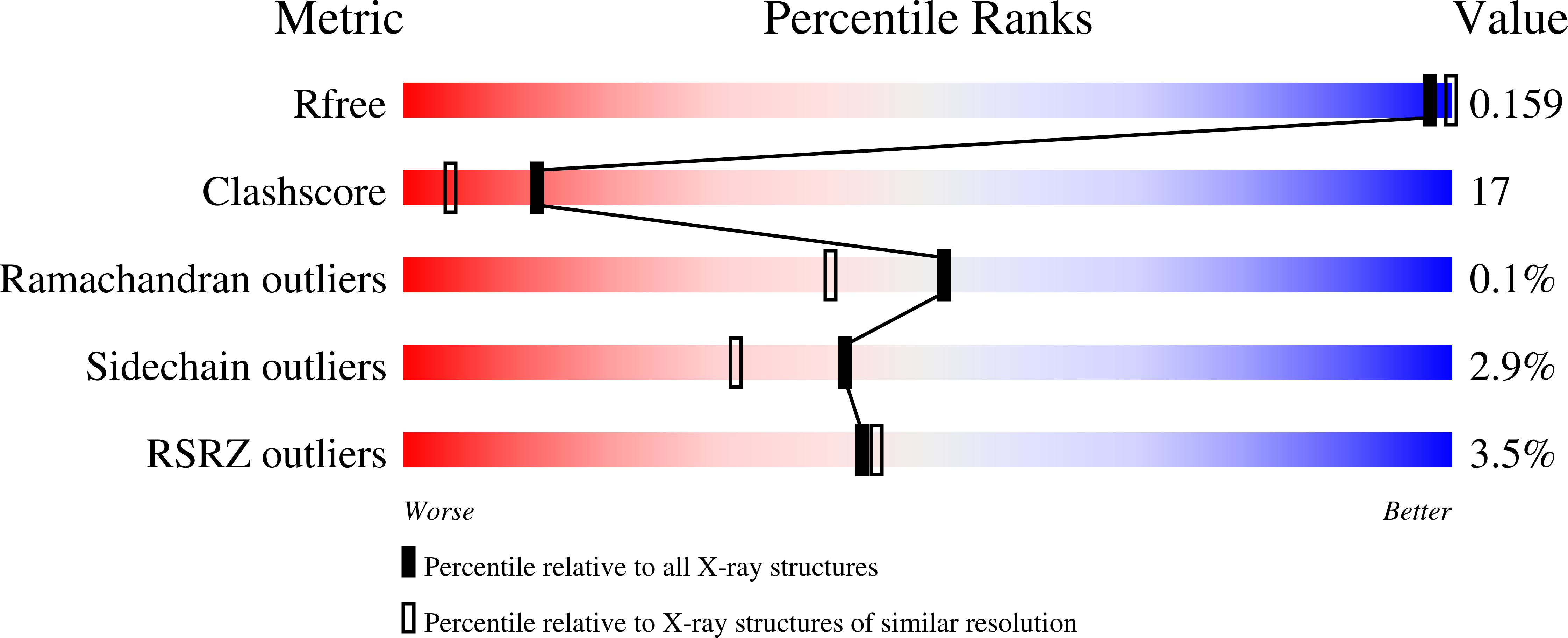Crystal structures of oxidized dinuclear manganese centres in Mn-substituted class I ribonucleotide reductase from Escherichia coli: carboxylate shifts with implications for O2 activation and radical generation.
Hogbom, M., Andersson, M.E., Nordlund, P.(2001) J Biol Inorg Chem 6: 315-323
- PubMed: 11315567
- DOI: https://doi.org/10.1007/s007750000205
- Primary Citation of Related Structures:
1JPR, 1JQC - PubMed Abstract:
The di-iron carboxylate proteins constitute a diverse class of non-heme iron enzymes performing a multitude of redox reactions. These reactions usually involve high-valent Fe-oxo species and are thought to be controlled by carboxylate shifts. Owing to their short lifetime, the intermediate structures have so far escaped structural characterization by X-ray crystallography. In an attempt to map the carboxylate conformations available to the protein during different redox states and different ligand environments, we have studied metal-substituted forms of the R2 protein of ribonucleotide reductase from Escherichia coli. In the present work we have solved the crystal structures of Mn-substituted R2 oxidized in two different ways. Oxidation was performed using either nitric oxide or a combination of hydrogen peroxide and hydroxylamine. The two structures are virtually identical, indicating that the oxidation states are the same, most likely a mixed-valent MnII-MnIII centre. One of the carboxylate ligands (D84) adopts a new, so far unseen, conformation, which could participate in the mechanism for radical generation in R2. E238 adopts a bridging-chelating conformation proposed to be important for proper O2 activation but not previously observed in the wild-type enzyme. Probable catalase activity was also observed during the oxidation with H2O2, indicating mechanistic similarities to the di-Mn catalases.
Organizational Affiliation:
Department of Biochemistry and Biophysics, Arrhenius Laboratories for Natural Sciences, Stockholm University, 106 91 Stockholm, Sweden.
















